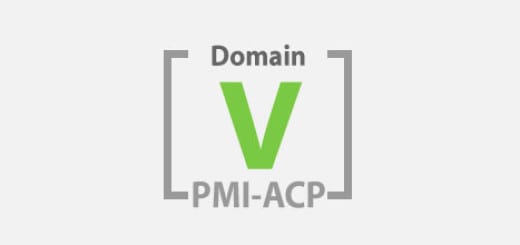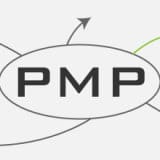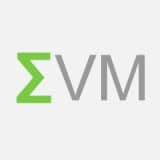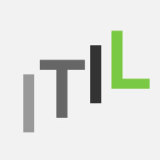PMI-ACP Knowledge And Skills: Level 1

[PMI-ACP® Exam Study Notes] Level 1 PMI-ACP® Knowledge And Skills group is one of the three Knowledge and Skills groups for the PMI-ACP® exam. The “Knowledge And Skills” accounts for a total of 50% of all the questions to be found on the exam paper. According to the PMI-ACP® exam content outline, Level 1 Knowledge and Skills includes 18 knowledge / skills.
PMI-ACP® Exam Importance: around 40 questions (~33% of all questions)
Article Highlights
PMI-ACP® Exam : Level 1 Knowledge And Skills
- 18 knowledge / skills (Level 1) for the PMI-ACP® Exam with around 1-2 questions on each knowledge / skills (in alphabetical order):
- Active Listening
- pay full attention and provide feedback while listening
- observe any body gesture / language
- ask for verification / clarification of what you have heard to prevent mis-understanding / conflicts
- when we practice active listening, the listening skills will progress through:
- internal listening – interpret what has listened through our own lens, miss the real message
- focused listening – empathize with the speaker, understand their message correctly
- global listening – in addition to focused listening, also pick up on subtle physical and environmental indicators (non-verbal messages)
- Agile Manifesto values and principles
- Agile Manifesto
- Individuals and interactions over processes and tools
- Working software over comprehensive documentation
- Customer collaboration over contract negotiation
- Responding to change over following a plan
- Twelve Agile Principles
- Our highest priority is to satisfy the customer through early and continuous delivery of valuable software.
- Welcome changing requirements, even late in development. Agile processes harness change for the customer’s competitive advantage.
- Deliver working software frequently, from a couple of weeks to a couple of months, with a preference to the shorter timescale.
- Business people and developers must work together daily throughout the project.
- Build projects around motivated individuals. Give them the environment and support they need, and trust them to get the job done.
- The most efficient and effective method of conveying information to and within a development team is face-to-face conversation.
- Working software is the primary measure of progress.
- Agile processes promote sustainable development. The sponsors, developers, and users should be able to maintain a constant pace indefinitely.
- Continuous attention to technical excellence and good design enhances agility.
- Simplicity – the art of maximizing the amount of work not done – is essential.
- The best architectures, requirements, and designs emerge from self-organizing teams.
- At regular intervals, the team reflects on how to become more effective, then tunes and adjusts its behavior accordingly.
- Agile Manifesto
- Assessing and incorporating community and stakeholder values
- work with stakeholders from the very beginning
- balance the (conflicting) requirements of different parties
- community can be interest groups, community of practice (CoP), the society as a whole, etc.
- Brainstorming techniques
- skills to collect and generate new ideas usually in release and iterative planning
- Quite writing – generate ideas individually through writing
- Round-robin – everyone take terms to suggest ideas
- Free-for-all – shout out ideas
- never say “no” rule
- some members may require coaching and mentoring in order to perform well in brainstorming sessions
- skills to collect and generate new ideas usually in release and iterative planning
- Building empowered teams
- empowered teams are:
- self-organizing: the team is in the best position to organize project works; team members also get recognition for their expertise through delegation of responsibility
- self-directing: the team can make their own decisions
- empowered team is more productive and efficient
- mutual accountability and collective project ownership promote empowerment
- contributing factors: co-location, face-to-face communication, a high level of trust from organization
- empowered teams are:
- Coaching and mentoring within teams
- coaching
- help achieving (personal / organization) goals
- on both personal and whole-team levels
- whole-team coaching peaks at the beginning and end of iterations
- personal coaching peaks at the midpoint of the iterations
- mentoring – pass on skills, knowledge and experience
- ideally, Agile team members are highly motivated and skilled; however, in reality, coaching and mentoring are needed to help building the perfect team (esp. during the early phrase)
- skills to coaching and mentoring:
- ask them questions to help finding the solutions – don’t push to an answer
- guarantee safety and confidence
- partner with the functional / line manager
- have an genuine desire to help others
- coaching
- Communication management
- ensure timely and appropriate generation, collection, distribution, storage, retrieval, and ultimate disposition of project information
- internal (within the team) and external communication
- make use of information radiators and face-to-face communication (with whiteboard) to promote communication
- paper-based communication is least effective
- Feedback techniques for product
- includes: wireframe, prototypes, spikes, simulation, demonstration of finished product
- get feedback as early as possible
- Prototypes, Simulations, Demonstrations
- many requirements cannot be described verbally or in words clearly
- customers often only know their true requirements once they see and use the product (IKIWISI – I’ll Know It When I See It)
- prototypes, simulations and demonstrations are used to collect requirements and gather feedback
- to confirm common understanding of the requirements on the developer and customer sides
- to gather new / adjusted functionality (owing to IKIWISI)
- the cost of change will be smaller when simulations and demonstrations are carried out frequently
- Incremental delivery
- deliver the most valuable features first and fast to realize values, e.g. in software development, aim to have features gone into product asap to reap competitive advantages
- to break down complex features into minimally shippable features
- incremental delivery also helps to confirm values and gain support of the project will all stakeholders
- Knowledge sharing
- knowledge sharing / transfer is a key component of Agile project management
- knowledge should be shared across the team, customer, community and organization
- encouraged through co-location, pair programming, retrospectives and reviews, cross training, reward structure (not just for individual performance but team), etc.
- measure up (base the reward on one level up) is a good way to encourage knowledge sharing, teamwork and collaboration, e.g. velocity of the team rather than individual member
- knowledge sharing / transfer is a key component of Agile project management
- Leadership tools and techniques
-
“Management is getting people to do what needs to be done. Leadership is getting people to want to do what needs to be done.”
- servant leadership
- modeling desired behavior – be a role model of honesty, forward-looking, competent, inspiring
- communicate and re-communicate project vision
- enabling others to act – empowered and trust, transparency, information sharing, make use of inclusive tools (e.g. Kanban board)
- being willing to challenge the status quo – cherish innovations and encourage others to speak up
-
- Prioritization
- changes are welcome but should be introduced after the iteration
- changes need to be prioritized by customer and team according to:
- Risk-based prioritization
- ROI-based prioritization
- Value-based prioritization
- Cycle Time / Time-to-market
- Team Velocity
- Complexity and the need of Spike
- Problem-solving strategies, tools and techniques
- let the team to solve problems collectively
- brainstorming, simulation, expert judgement, root cause analysis, etc.
- steps in problem solving
- gather data – including metrics, what’s happened and emotional states
- generate insights – brainstorming, 5 whys, fishbone, prioritize with dots, identify themes
- decide what to do
- short subjects – e.g. start doing, do more of, do less of, stop doing
- SMART goals – specific, measurable, attainable, relevant, timely
- Project and quality standards for Agile projects
- quality is built-in for Agile projects as the product should be “fit for purpose”
- stakeholder involvement
- daily stand-ups and retrospectives
- automated testing
- quality planning, quality assurance (emphasis on process / prevention) and quality control (emphasis on product)
- formal written guideline on quality standards may be required
- quality is built-in for Agile projects as the product should be “fit for purpose”
- Stakeholder management
- stakeholders includes anyone that will be impacted / have an impact on the project (i.e. including sponsor, vendors, final customer, etc.) but excluding the project team in Agile projects
- in traditional project management, stakeholders include the project team
- stakeholder management tasks involve:
- identify stakeholders that are relevant to the project success
- encourage / invite stakeholder involvement
- mangage stakeholder interests actively
- discuss frequently the end results with stakeholders for expectation management
- show stakeholders project progress and capabilities with demos / presentations for engagement
- discuss estimates and projections openly (even in case of bad news)
- may need to educate stakeholders about Agile project management processes and benefits
- maintain a good relationship with all stakeholders and provide updated information to stakeholders
- short iteration cycles allow stakeholders to be closely and frequently engaged
- invite stakeholders to retrospectives and planning meetings
- stakeholders includes anyone that will be impacted / have an impact on the project (i.e. including sponsor, vendors, final customer, etc.) but excluding the project team in Agile projects
- Team motivation
- Agile teams are highly motivated through self-managing and self-organizing with a high level of trust from organization
- align the goal of all team members through understanding what motivate individual members
- motivators and de-motivators are different for different people
- salary raise is not an effective motivator
- rewards are better for the whole team instead of individuals to promote mutual accountability
- Time, budget, and cost estimation
- steps involved in Agile estimation:
- determine the unit (e.g. story points / ideal time)
- calculate / estimate the efforts
- convert efforts into work schedule (by considering the resources availability, holidays and dependency)
- calculate the cost estimate (labour costs, equipment, other costs)
- labour costs usually take up the lion’s share
- planning pokers, wide band Delphi, affinity estimation
- steps involved in Agile estimation:
- Value-based decomposition and prioritization
- value-based decomposition and prioritization is the process of gathering high level-requirements, ranking the priorities by values and, during development, decompose the requirements into detailed, smaller tasks (or iteration goal requirements) and prioritized again by value (progressive elaboration)
- decomposition is the breaking down of user stories into manageable tasks to be completed in each iteration
- the team work with the customer to determine prioritization
- the most valuable tasks are to be performed first
- value-based decomposition and prioritization is the process of gathering high level-requirements, ranking the priorities by values and, during development, decompose the requirements into detailed, smaller tasks (or iteration goal requirements) and prioritized again by value (progressive elaboration)
- Active Listening
Summary: PMI-ACP® Exam Level 1 Knowledge And Skills
This PMI-ACP® Exam Study notes covers 18 knowledge and skills from the Level 1 group of Knowledge and Skills for the PMI-ACP® exam syllabus. This group is very important for the PMI-ACP® exam as it accounts for 33% of all the exam questions.
Most Popular PMI-ACP Certification Articles
- Top 10 Tips to Prepare for the exam (I got all Proficient in my exam)
- How to Get 21 Contact Hours?
- Over 600+ FREE Quality Mock Exam / Practice Questions





 Hi, my name is Edward Chung, PMP, PMI-ACP®, ITIL® Foundation. Like most of us, I am a working professional pursuing career advancements through Certifications. As I am having a full-time job and a family with 3 kids, I need to pursue professional certifications in the most effective way (i.e. with the least amount of time). I share my exam tips here in the hope of helping fellow Certification aspirants!
Hi, my name is Edward Chung, PMP, PMI-ACP®, ITIL® Foundation. Like most of us, I am a working professional pursuing career advancements through Certifications. As I am having a full-time job and a family with 3 kids, I need to pursue professional certifications in the most effective way (i.e. with the least amount of time). I share my exam tips here in the hope of helping fellow Certification aspirants!





